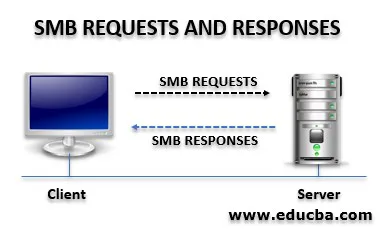SMB
Server Message Block (SMB) is a network transport protocol for file systems operations to enable a client to access resources on a server. The primary purpose of the SMB protocol is to enable remote file system access between two systems over TCP/IP.
SMB (Server Message Block) is a client/server protocol that governs access to files and whole directories, as well as other network resources like printers, routers or interfaces open to the network.
SMB troubleshooting can be extremely complex.
https://support.microsoft.com/zh-cn/topic/%E5%A6%82%E6%9E%9C%E6%82%A8%E6%9B%B4%E6%94%B9%E5%AE%89%E5%85%A8%E8%AE%BE%E7%BD%AE%E5%92%8C%E7%94%A8%E6%88%B7%E6%9D%83%E9%99%90%E5%88%86%E9%85%8D-%E5%88%99%E5%8F%AF%E8%83%BD%E4%BC%9A%E5%AF%BC%E8%87%B4%E5%AE%A2%E6%88%B7%E7%AB%AF-%E6%9C%8D%E5%8A%A1%E5%92%8C%E7%A8%8B%E5%BA%8F%E9%97%AE%E9%A2%98%E5%8F%91%E7%94%9F-0cb6901b-dcbf-d1a9-e9ea-f1b49a56d53a
在 Windows 95、Windows 98 和 Windows 98 Second Edition 中,目录服务客户端在通过 NTLM 身份验证向
Microsoft SMB Protocol Authentication

The security model used in Microsoft SMB Protocol is identical to the one used by other variants of SMB, and consists of two levels of security—user and share. A share is a file, directory, or printer that can be accessed by Microsoft SMB Protocol clients.
User-level authentication indicates that the client attempting to access a share on a server must provide a user name and password. When authenticated, the user can then access all shares on a server not also protected by share-level security. This security level allows system administrators to specifically determine which users and groups can access a share.
Share-level authentication indicates that access to a share is controlled by a password assigned to that share only. Unlike user-level security, this security level does not require a user name for authentication and no user identity is established.
Under both of these security levels, the password is encrypted before it is sent to the server. NTLM and the older LAN Manager (LM) encryption are supported by Microsoft SMB Protocol. Both encryption methods use challenge-response authentication, where the server sends the client a random string and the client returns a computed response string that proves the client has sufficient credentials for access.
https://learn.microsoft.com/en-us/windows/win32/fileio/microsoft-smb-protocol-authentication
For example, if you use Windows Server 2016 to reach an SMB share that is hosted on Windows 10, Windows Server 2016 is the SMB Client and Windows 10 the SMB Server.
Server Message Block (SMB) is a network transport protocol for file systems operations to enable a client to access resources on a server. The primary purpose of the SMB protocol is to enable remote file system access between two systems over TCP/IP.
SMB (Server Message Block) is a client/server protocol that governs access to files and whole directories, as well as other network resources like printers, routers or interfaces open to the network.
SMB troubleshooting can be extremely complex.
服务器消息块 (SMB) 是受许多 Microsoft 操作系统支持的一种资源共享协议。
它是网络基本输入/输出系统 (NetBIOS) 和许多其他协议的基础。
SMB 签名对用户和承载数据的服务器都进行身份验证。 如果任何一方未能通过身份验证过程,则不发生数据传输。
https://support.microsoft.com/zh-cn/topic/%E5%A6%82%E6%9E%9C%E6%82%A8%E6%9B%B4%E6%94%B9%E5%AE%89%E5%85%A8%E8%AE%BE%E7%BD%AE%E5%92%8C%E7%94%A8%E6%88%B7%E6%9D%83%E9%99%90%E5%88%86%E9%85%8D-%E5%88%99%E5%8F%AF%E8%83%BD%E4%BC%9A%E5%AF%BC%E8%87%B4%E5%AE%A2%E6%88%B7%E7%AB%AF-%E6%9C%8D%E5%8A%A1%E5%92%8C%E7%A8%8B%E5%BA%8F%E9%97%AE%E9%A2%98%E5%8F%91%E7%94%9F-0cb6901b-dcbf-d1a9-e9ea-f1b49a56d53a
在 Windows 95、Windows 98 和 Windows 98 Second Edition 中,目录服务客户端在通过 NTLM 身份验证向
Windows Server 2003 服务器验证身份时使用 SMB 签名。
Microsoft SMB Protocol Authentication

The security model used in Microsoft SMB Protocol is identical to the one used by other variants of SMB, and consists of two levels of security—user and share. A share is a file, directory, or printer that can be accessed by Microsoft SMB Protocol clients.
User-level authentication indicates that the client attempting to access a share on a server must provide a user name and password. When authenticated, the user can then access all shares on a server not also protected by share-level security. This security level allows system administrators to specifically determine which users and groups can access a share.
Share-level authentication indicates that access to a share is controlled by a password assigned to that share only. Unlike user-level security, this security level does not require a user name for authentication and no user identity is established.
Under both of these security levels, the password is encrypted before it is sent to the server. NTLM and the older LAN Manager (LM) encryption are supported by Microsoft SMB Protocol. Both encryption methods use challenge-response authentication, where the server sends the client a random string and the client returns a computed response string that proves the client has sufficient credentials for access.
https://learn.microsoft.com/en-us/windows/win32/fileio/microsoft-smb-protocol-authentication
The SMB Server (SRV) refers to the system that is hosting the file system, also known as the file server. The SMB Client (CLI) refers to the system that is trying to access the file system, regardless of the OS version or edition.
For example, if you use Windows Server 2016 to reach an SMB share that is hosted on Windows 10, Windows Server 2016 is the SMB Client and Windows 10 the SMB Server.
0
